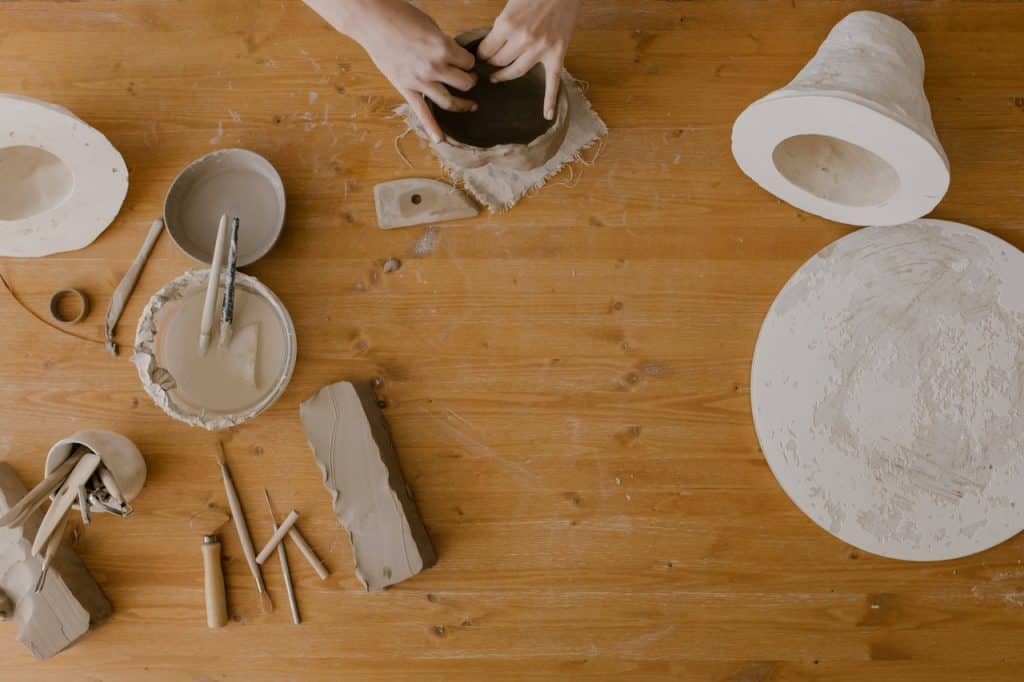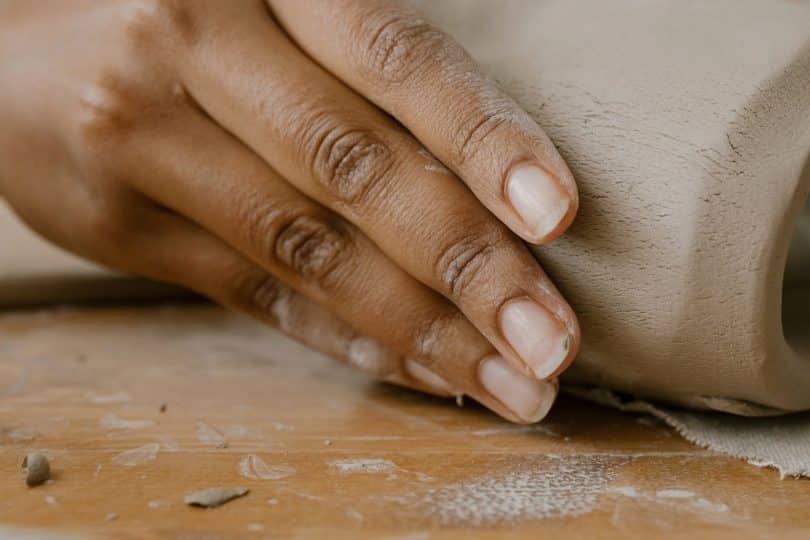As a beginner, sculpting becomes easy and approachable when you have the right tools and know the tricks. To be precise, don’t try to use complex and challenging techniques at the start. Sculpting can be easily done with a wide range of materials, such as clay, metal, and wood. However, for beginner sculptures, clay is one of the best materials to get started.
Use the following tips that will give you good and quick results and can help you explore the art of sculpturing.

1. Envision the Final Shape
Do you have an image of the final piece in your mind? Well, you should. Having a clear idea of how you want your final clay sculpture will help you plan for it.
Therefore, before you begin, make sure to sketch a couple of projections and viewpoints that you have imagined. Besides that, think about the ratios between the lengths and dimensions of the shape.
For a beginner, it might be challenging to create a 3D sculpture that looks perfect from all sides. In that case, it’s better to think about where you will place that sculpture and in what direction it will be viewed. This way, when you sculpt, you can at least try to make it look good from one angle.
2. Invest in the Right Tools
Many people use household accessories to roll, shape, texture, and cut clay. These accessories include utility and kitchen knives, toothpicks, old toothbrushes, and crunches of aluminum foil.
However, managing these tools might be tricky for a newbie. A better option for you is to start your sculpting journey by creating your small toolbox with the following items.
Rollers
can help you roll out the clay and help you get the thickness you need.
Blades
Blades are ideal accessories to make a curve, straight lines, or decorative edging and cuts.
Needle Tool
If you want to make pierced holes and tiny details in your sculpture, you need a needle tool. They also help you create adorable and eye-catching earrings, beads, and ornaments that get a rich feel with the smallest details.
Shaper
If you want to connect two clay shapes, like adding an ear to the face, opt for a flexible shaper. It will help you seamlessly fit both pieces together without leaving any mark behind.
Shape Cutters
From triangles to stars, you can cut any shape using clay cutters. They come in all shapes, sizes, and materials. You can purchase some common shapes, like a circle, which will help accelerate the learning process.
Sandpaper
Sandpaper is also one of the most important things to purchase when it comes to sculpting for beginners. This amazing tool may look worthless but can help you achieve the ideal and natural texture of things like stone, grass, and skin.
3. Always Test Clay for Wetness
Do you remember playing with clay in your childhood? If so, you should know that making a pleasing shape from dry clay is obviously impossible unless you are a talented and experienced sculpture. So, it’s better to check its wetness.
Fortunately, it’s pretty easy to test. Take a small piece of clay, and roll it in your hands until it gets a cylindrical shape. Try to keep it 10 cm long and 1 cm thick, and bend the cylinder.
If it bends without cracking, it means you can proceed with your work. On the other hand, if it cracks, add more water and repeat the procedure to test it again.
4. Avoid Using Armatures
Another important tip of sculpting for beginners is to avoid using an armature. You might think then will you create clay figures? Sculptors indeed use armature to get an excellent shape.
To be precise, they use long and thin metal structures to support the clay. Some professionals also use aluminum and brass material for the armature.
However, it will be easier and accessible for a newbie to use more contained shapes. Since you need special skills to use armature, it might be challenging for you to get the required shape. Once you get the hang of contained shapes, you can give the armatures a shot.
5. Choose an Easy Starter Project
Like others, you may have planned to make an exquisite and surprising sculpture. But think again, can you make it on your first attempt? Of course, it will be extremely challenging to create complex and detailed shapes. It’s best to experiment with some tools and practice your skills before dabbling in professional-level projects.
You can try several first-time clay projects that are easy and quick. Start your hobby by creating marbled beads, earnings, magic wands, ring dashes, vases, and keychains. Practicing simple things will also give you an idea of the clay consistency for your projects.
6. Store Clay Carefully
You might already know that clay needs great care to stay in good condition. Leaving it open in your room can make it dry and hard. If this happens, you may have to throw your clay or use some technique to soften it.
The best way to prevent these problems is to place your clay in an opaque container. Also, make sure to store your container in a cool and dark area. Choose a place that is not exposed to sunlight. This way, the clay doesn’t get damaged or hardened from direct sunlight or heat.
Bottom Line
When it comes to sculpting for beginners, it is important to understand that the techniques that work best for experts might not be ideal for you. So, it is best to purchase clay tools and practice useful tips that can help you excel in this creative field. Keep in mind that hobbies like woodworking, calligraphy and sculpting need plenty of time and practice.










